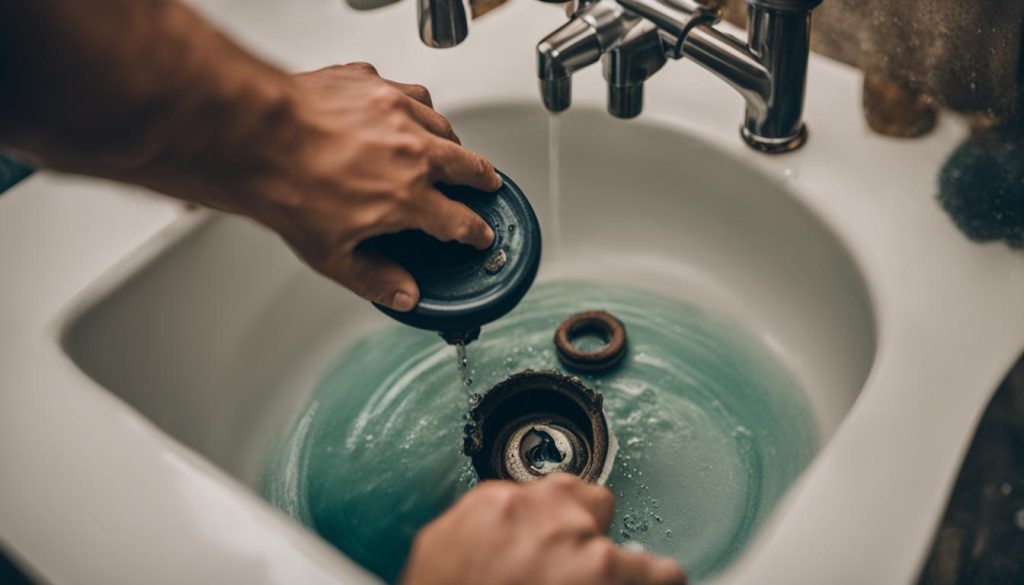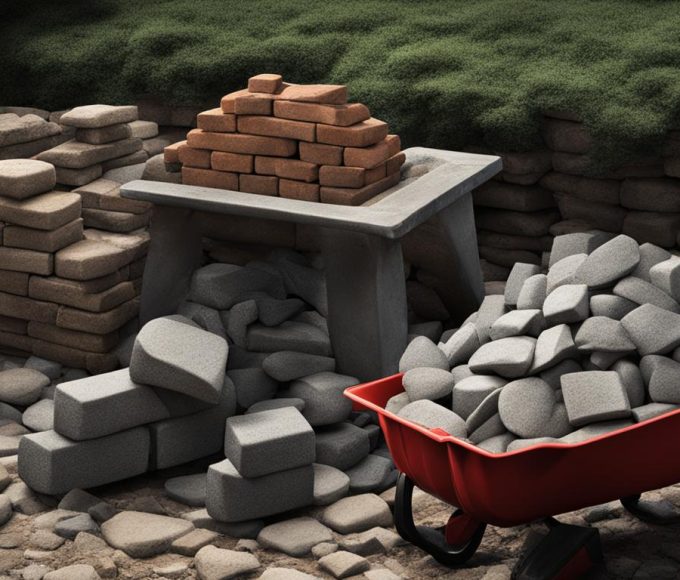Welcome to your journey as a new homeowner! With the responsibility of maintaining your home, it’s crucial to have the essential home repair skills under your belt. In this article, we will equip you with 15 vital skills that every homeowner should know. From fixing drywall to tackling emergency repairs, you’ll gain the knowledge to confidently handle common household issues.
Whether you’re a DIY enthusiast or prefer professional home repair services, these skills are invaluable. You’ll learn how to improve and maintain your home, saving both time and money in the long run. So, let’s dive into the world of home improvement, maintenance, and renovation!
Stay tuned for Section 2 where you will learn how to repair drywall and fix those pesky damaged walls.
How to Repair Drywall
Damaged drywall is a common issue that homeowners face. Whether it’s holes from hanging pictures or dents from furniture accidents, knowing how to repair drywall is essential. Thankfully, with a few simple tools and materials, you can easily fix damaged walls and restore them to their former glory.
To repair drywall, you’ll need a utility knife, sandpaper, a putty knife, joint compound, and extra drywall. Start by cutting out the damaged area using a utility knife, making sure to create a clean and even edge. Then, create a patch with the extra drywall, ensuring it fits snugly into the hole. Secure the patch in place with joint compound, using a putty knife to spread it evenly. Allow the joint compound to dry completely, then sand it smooth to create a seamless finish. Finally, paint over the repaired area to blend it seamlessly with the rest of the wall.
By mastering the skill of repairing drywall, you can save time and money by tackling minor repairs yourself. Plus, you’ll have the satisfaction of knowing that you have the knowledge and ability to maintain your home’s interior walls in the best possible condition.
Tips for Repairing Drywall:
- Always wear safety goggles and a dust mask when working with drywall to protect your eyes and lungs.
- Take your time when cutting out the damaged area to ensure a clean and precise cut.
- Apply multiple thin layers of joint compound, allowing each layer to dry before sanding, for a professional-looking finish.
- Use a high-quality paint that matches the color and texture of your existing walls to achieve a seamless repair.
How to Change HVAC Filters
Maintaining your HVAC system is essential for clean air and optimal performance. One important task is regularly changing your HVAC filters. These filters trap dust, allergens, and other airborne particles, preventing them from circulating in your home. Over time, the filters can become clogged and hinder airflow, leading to reduced efficiency and potential damage to the system.
To change your HVAC filters, start by turning off the unit to ensure your safety. Locate the filter cover, which is usually found near the return air vent or the HVAC unit itself. Open the cover and carefully remove the old filter. Take note of the size and type of filter so you can purchase the correct replacement.
Before installing the new filter, it’s a good idea to clean the vents to remove any built-up dust or debris. Use a vacuum cleaner or a soft brush to gently clean the vents. Next, insert the new filter into the designated slot, making sure it is facing the correct direction (usually indicated by arrows on the filter). Close the filter cover securely.
Changing your HVAC filters regularly, typically every 1-3 months, will help maintain good air quality, prevent system malfunctions, and extend the lifespan of your HVAC system. By adopting this simple maintenance routine, you can enjoy cleaner air and the efficient operation of your HVAC system.
How to Turn Off the Gas
Knowing how to turn off the gas in your home is an essential skill that every homeowner should learn. In case of a gas leak or any other emergency situation, turning off the gas can help prevent further damage and ensure your safety.
Locating the Gas Shutoff Valve
The first step in turning off the gas is to locate the gas shutoff valve. This valve is usually found near the gas meter, either on the exterior of your home or in the basement. It is important to familiarize yourself with its location beforehand, so you can quickly locate it in case of an emergency.
Turning Off the Gas
Once you have located the gas shutoff valve, you will need a wrench to turn off the lever. Use the wrench to turn the lever perpendicular to the pipe, shutting off the gas flow. Remember to turn off the gas only if you suspect a gas leak or if it is necessary for any repairs or maintenance.
After turning off the gas, it is crucial to contact your gas service provider to inspect your system before turning it back on. They will ensure that the problem is resolved and that it is safe to use the gas again.
How to Do a Quality Paint Job
Painting is a popular DIY project that can transform the look and feel of your home. Whether you want to refresh a room or add a pop of color to your walls, knowing how to do a quality paint job is essential. Follow these painting tips and techniques to achieve professional-looking results:
Clean and Prepare the Surfaces:
Before you start painting, make sure to clean the surfaces that you’ll be working on. Remove any dirt, dust, or grease by wiping them down with a damp cloth. Fill in any holes or cracks with spackling compound and sand them down for a smooth finish. Use painter’s tape to protect areas that you don’t want to paint, such as trim or windows.
Choose the Right Tools and Supplies:
Having the right tools and supplies is key to a successful paint job. Invest in high-quality brushes, rollers, and paint trays for even application. Consider using a paint sprayer for larger surfaces or to achieve a smooth, professional finish. Pick the appropriate type of paint for the surface you’re painting, whether it’s latex or oil-based. Don’t forget to have drop cloths on hand to protect your floors and furniture from any accidental drips or spills.
Apply Paint in Thin, Even Coats:
When it’s time to paint, start by cutting in the edges using a brush. This means painting along the corners, edges, and trim with a steady hand. Then, use a roller to apply the paint in thin, even coats on the larger surfaces. Avoid overloading the roller with paint as it can lead to drips or an uneven finish. Allow each coat to dry completely before applying the next one. If necessary, apply a second coat for better coverage and a more vibrant color.
By following these painting tips and techniques, you can achieve a quality paint job that will enhance the beauty of your home. Whether you’re a seasoned DIYer or just starting out, taking the time to properly prepare and execute your painting project will yield impressive results.
How to Remove Wallpaper
Removing wallpaper can be a daunting task, but with the right techniques, you can tackle this project with ease. Whether you’re updating your home’s decor or preparing the walls for a fresh coat of paint, the following steps will guide you through the wallpaper removal process.
Preparation
Before you begin, gather the necessary tools and supplies: a scoring tool, fabric softener, a spray bottle, a putty knife, and a sponge. Start by scoring the outer layer of the wallpaper with the scoring tool. This will allow the fabric softener solution to penetrate and loosen the adhesive. Fill the spray bottle with a mixture of fabric softener and hot water, and generously spray the wallpaper.
Removal
Once the wallpaper is soaked, begin removing it with a putty knife, starting from a corner or an edge. Gently lift the wallpaper, sliding the putty knife underneath as you go. If you encounter stubborn sections, apply more fabric softener solution and let it sit for a few minutes before attempting to remove it again. Use a sponge and clean water to wipe away any residual adhesive.

When to Call a Professional
Sometimes, stubborn clogs require the expertise of a professional plumber. If your attempts to unclog the drain are unsuccessful or if you suspect there may be a larger issue at hand, it’s best to seek professional help. A skilled plumber will have the necessary tools and knowledge to address the problem effectively and ensure long-lasting results.
How to Cut the Main Water Supply
Knowing how to cut off the main water supply is a crucial skill for any homeowner, especially in emergency situations. By quickly stopping the flow of water, you can prevent further damage from major leaks or broken pipes. Here’s how you can cut off the water supply in your home:
Locate the Main Water Valve
How to Caulk
Proper caulking is an essential skill for every homeowner. It helps maintain the integrity of seals around sinks, tubs, and windows, preventing water damage and energy loss. With a few simple steps, you can easily caulk gaps and cracks yourself, saving money and keeping your home watertight.
To start, remove the old caulk using a caulk remover tool or a putty knife. Make sure to clean the area thoroughly before applying new caulk. Next, tape off the area around the gap or crack to create clean lines and prevent any mess. You can use painter’s tape or masking tape for this step.
Now, it’s time to apply the caulk. Cut the tip of the caulk tube at a 45-degree angle, then load it into a caulk gun. Hold the gun at a 45-degree angle and apply a steady, even bead of caulk into the gap or crack. Make sure the caulk completely fills the space.
After applying the caulk, use a caulk smoothing tool or a damp finger to smooth and shape the caulk. This will create a neat and professional-looking finish. Finally, wait for the caulk to dry and cure according to the manufacturer’s instructions before removing the tape.
How to Install Shelving
Adding shelves to your home can provide valuable storage space and enhance the organization of your living areas. Whether you want to display decorative items, store books, or keep everyday essentials within reach, knowing how to install shelves is a useful DIY skill. With a few simple tools and the right techniques, you can create functional and stylish wall-mounted shelves that suit your needs.
To begin, gather the necessary supplies: a level, a power drill, screws or wall anchors, a tape measure, a pencil, and of course, the shelves themselves. Start by measuring and marking the desired height and location of the shelves on the wall using a pencil and level for accuracy.
Next, using a power drill, attach the wall brackets to the designated spots, making sure to align them with the marked measurements. If the brackets are not designed to be adjustable, ensure they are straight and level before securing them to the wall. Once the brackets are in place, carefully and securely attach the shelves to the brackets, following the manufacturer’s instructions.
Finally, step back and admire your newly installed wall-mounted shelves. Take the time to arrange your items on the shelves, keeping them organized and visually appealing. Remember to regularly check the shelves for stability and make any necessary adjustments or repairs as needed.
Tips for DIY Shelving
– Before installing the shelves, consider the weight of the items you plan to place on them. Choose brackets and shelves that can support the intended load.
– If you’re unsure about the wall’s construction or stability, it may be wise to consult a professional or research how to properly mount shelves on your specific wall type.
How to Change Your Ceiling Fan’s Direction
Changing the direction of your ceiling fan is a simple yet effective way to improve HVAC system efficiency and save on energy bills. By adjusting the fan’s direction according to the season, you can enhance the comfort of your home while reducing energy consumption. Follow these easy steps to change your ceiling fan’s direction:
During the summer months, set your fan to run counterclockwise. This creates a cool downdraft, which helps circulate the air and provides a refreshing breeze in the room. By running the fan in this direction, you can lower the demand on your air conditioning system, resulting in energy savings.
In the winter, set your ceiling fan to run clockwise. This creates an updraft that pushes warm air down from the ceiling, effectively circulating it throughout the room. By doing so, you can make your space feel warmer without having to rely solely on your heating system, thus saving energy and reducing heating costs.
Changing the direction of your ceiling fan is a simple yet effective energy-saving tip that can improve your HVAC system’s efficiency and enhance the comfort of your home. By following these guidelines, you can enjoy a more energy-efficient home while staying comfortable all year round.







